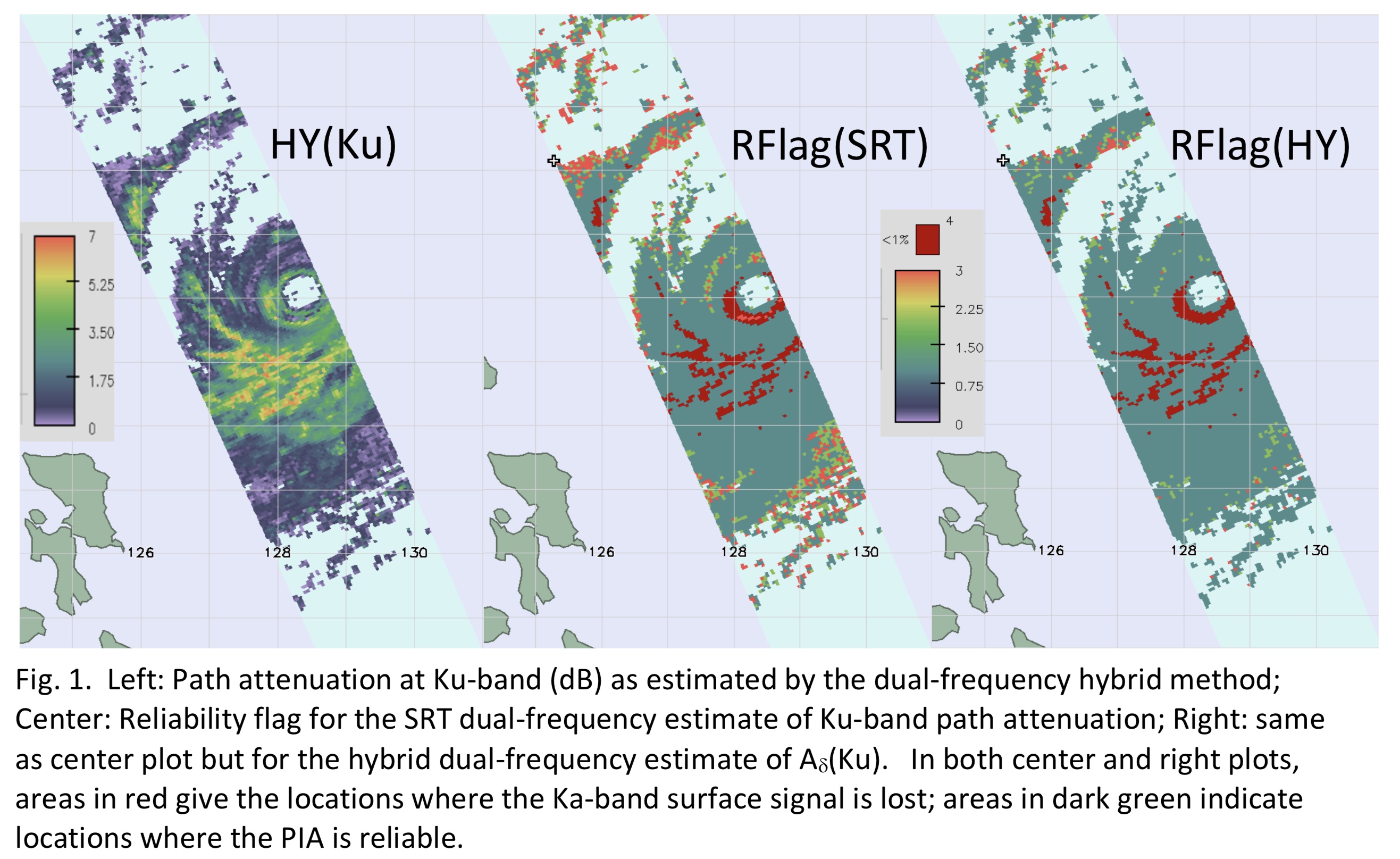Graphical Abstract
Meneghini, R., H. Kim, L. Liao, J. Kwiatkowski, and T. Iguchi, 2021: Path attenuation estimates for the GPM Dual-Frequency Precipitation Radar (DPR). J. Meteor. Soc. Japan, 99, 181-200.
Special Edition on Global Precipitation Measurement (GPM): 5th Anniversary
https://doi.org/10.2151/jmsj.2021-010
Graphical Abstract
Published
Plain Language Summary: Estimation of the path-integrated attenuation (PIA) is a critical part of retrieving precipitation parameters using measurements from the Dual-Frequency Precipitation Radar (DPR) on board the Global Precipitation Measurement Mission (GPM) satellite. In this paper, we describe and evaluate different techniques used to estimate the PIA using both single- and dual-frequency DPR radar data. The resulting algorithm forms part of the present operational system used to process the DPR data.
Highlights:
- The surface reference technique (SRT) has been applied both to the PR (TRMM) and DPR (GPM) radar data to estimate the path-integrated attenuation (PIA).
- To improve the performance of the estimate at light rain rates, the SRT has been combined with the Hitschfeld-Bordan (HB) method to produce a hybrid estimate of PIA (HY).
- A similar procedure can be used with dual-frequency estimates of PIA by combining the SRT, HB, and a traditional dual-frequency PIA estimate (DW) to produce a dual-frequency hybrid estimate, an example of which is shown in the left-hand panel of the above figure.
- Although the dual-frequency estimate of PIA is generally more accurate than the single- frequency estimate, a shortcoming is that, in areas of high rain rate, the Ka-band surface signal is often lost. Examples of this are shown by the red areas in the center and right panels above.
- In these cases, the single-frequency Ku-band data are used to estimate the path attenuation at Ku-band.







